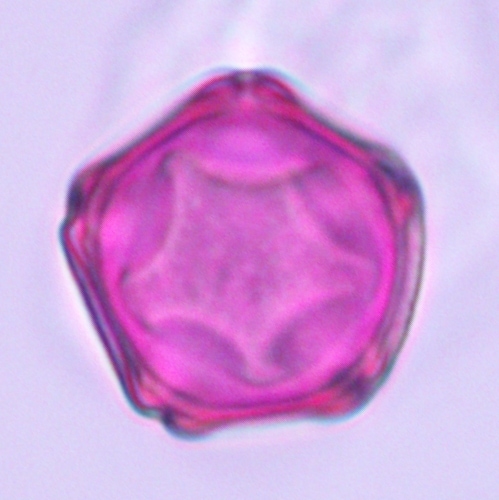Alder (Genus: Alnus) is generally a spring bloomer.
During the Thanksgiving weekend, on Nov-25th, 2018, I did some air sampling to prepare my weekly pollen report. I was not expecting any pollen in the sample. Certainly not alder!
However, when I studied the sample under a microscope, I saw a small number of what looked like pentagonal pollen of alder!
Alder is generally known to be a spring bloomer, so, I was not very confident of my findings. There was only one way to settle this: I had to now go out and find the source of the pollen that my air sampler had caught.
After some fine arborial detective work in my neighborhood of Burlingame, California, not far from my lab, I finally found three alder trees standing next to each other. One had nearly no flowers (catkins) on it, the second one had flowers but they were not mature yet. But, the third tree was loaded with mature male flowers!
I plucked some catkins to bring to my lab and my hands immediately turned yellow with pollen! It was a sign that the tree was shedding pollen in large numbers.
I came home and made a reference slide from the catkins and the pollen matched the unmistakable alder pollen that I had caught in the air sampler.
There on, our air samplers in Burlingame, California caught alder pollen throughout the winter all the way to the end of March.
I shared this finding with my mentor Professor Estelle Levetin Ph.D. and her esteemed student Victoria Rodinkova Ph.D. They both found Alnus blooming during winter to be somewhat out of the ordinary if not entirely surprising.
So, when do alder trees release pollen?
As we learned from regular air sampling and routine observation of trees in my California neighborhood, some species of alder (Genus: Alnus) release pollen during winter, and some release pollen in early spring. Generally, the alder pollen season starts around Nov-15th and ends by Mar-15th.



